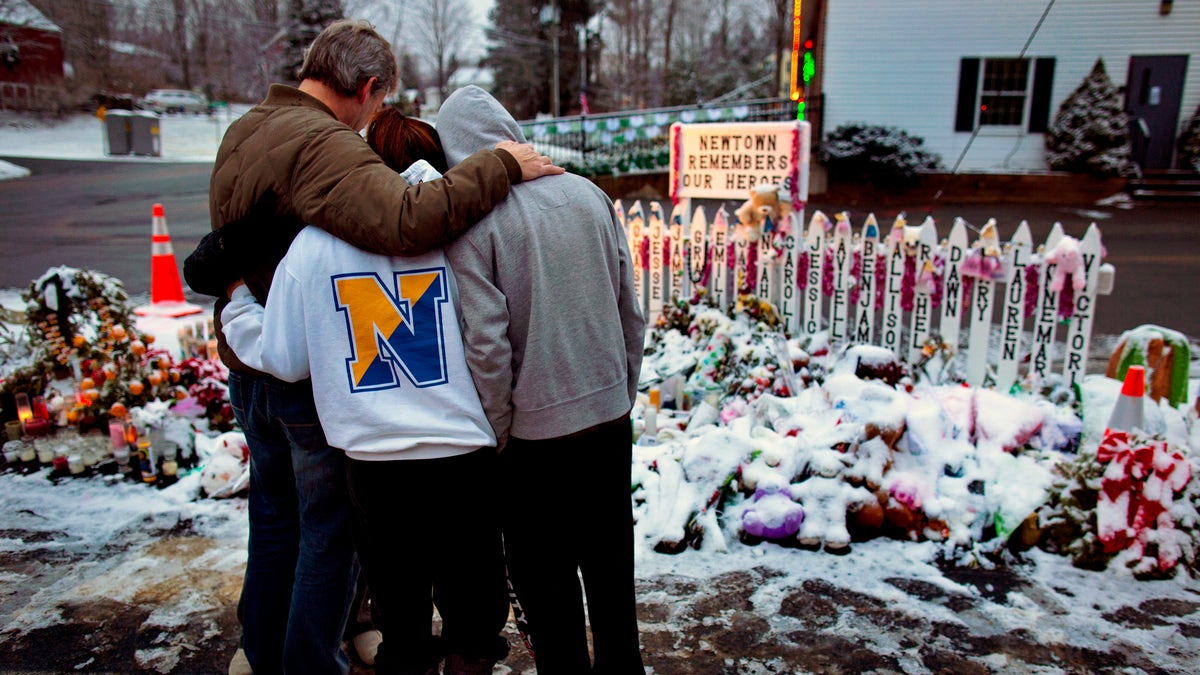
Members of the Newton community mourn those lost in the Sandy Hook Elementary School massacre. (AP2012)
It has been almost two years since 20 children and six adult staff members lost their lives in a shooting at Sandy Hook Elementary School in Newtown, Conn. The tragedy wounded the nation and made parents everywhere ask themselves: Are my children safe at school?
Unfortunately, the answer is no in too many cases.
Today’s school leaders face unprecedented safety and security challenges, whether from intruders or natural disasters. Such risks make it essential for schools to stay current on the latest advances in construction, technological tools and safety protocols.
Yet, many of our nation’s K-12 buildings are antiquated, and access to funding for upgrades is often difficult to prioritize against other capital requirements.
[pullquote]
In May 2013, for example, two schools in Moore, Okla., were flattened by a tornado, costing seven children’s lives and injuring another two dozen parents and students. Building engineers say construction flaws and the lack of shelters were likely to blame for the magnitude of loss and injury.
While high profile tragedies such as these remind us of the need to improve students’ security, public outcry and motivation to address the issue tend to wane between high-profile events.
Safe Schools Week (October 19-25)—sponsored by National School Safety Center, state governors and state school superintendents—provides an opportunity to pause and assess how we can better secure our schools and protect our children.
At Allegion, we deploy security consultants to travel to schools around the country to evaluate their security systems and protocols and make recommendations on how to improve security practices. Based on this experience, we have identified three critical security practices that every school should and can do -- regardless of available budget -- to keep students and staff safe:
1. Stay Focused on Proven and Reliable Practices. Safety threats facing schools today -- from both intruders and natural disasters -- require immediately responsive and dependable security systems.
2. Schools Should Avoid Untested, New Technologies. These include such technologies as bullet proof backpacks and white boards and make-shift door barricades. While the development of these new tools may be well intended, their use could put staff and students at an even greater risk.
3. Develop a Lockdown Strategy. It has been proven that lockdowns save lives. Many students who were locked down in their classrooms at Sandy Hook Elementary School survived. All schools should have the tools in place to manage the comings and goings of each doorway so that they can lock down on demand, immediately, as soon as an emergency arises.
There are three proven lockdown technologies:
1. Manual Lockdown – uses keys and classroom security functions to lock down a space. This is an economical option but relies upon an individual having the right key in hand and being at the right opening during a lockdown situation.
2. Remote Lockdown – enables classroom lockdown by remote fob within proximity of door and is a cost-effective alternative to a networked system.
3. Centralized Lockdown – this networked system, when integrated with access control software, can enable immediate school or campus-wide lockdown.
Plan and Prepare. Even the highest security technology is ineffective without proper training and preparation. A school’s ability to activate lockdown relies on the people and protocols in place.
Every school needs to have a security plan that defines how it will control access at the school, along with staff roles and responsibilities for implementing those procedures.
Protocols and actions should be clearly defined, documented and practiced regularly. These policies and procedures should be part of a school’s code of conduct, and schools should ensure educators—even substitutes and support personnel—are trained on them.
Regardless of which of the recommended lock down systems a school uses, drills should be practiced on a regular basis. Staff and students should know exactly what do and where to go in the case of an emergency.
The bottom line is this: the ability to address a hazardous situation – whether a fire, an intruder or a natural disaster – safely and efficiently will help save lives.
Lack of funding cannot be an excuse. Every school can use the resources and knowledge at its disposal now to enact measures that protect children and make them feel safe in school so they can focus on learning – and just being kids.
This should be the number-one security priority in all U.S. schools, and the time to act is now. We can’t afford to wait for the next tragedy.
